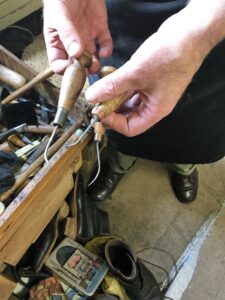Video games that attempt to convey an experience or historical moment effectively must balance historical authenticity with engaging, accessible mechanics. Walden, A Game attempts to virtually represent Henry David Thoreau’s experience of living off the land at Walden Pond, near Concord, Massachusetts in the 1840s. The game does this by allowing the user to play as Thoreau and partake in many of his experiences portrayed in his book, Walden, and also includes many excerpts from the book, which Thoreau’s character recites throughout the game.
Walden, A Game is effective at creating a historically authentic experience while also engaging the player. The gameplay itself can draw the player out of the immersive experience at times. The food mechanics, which involves picking fruits, growing vegetables, and hunting, can seem clunky. Ralph Waldo Emerson serves as your spiritual guide throughout the journey, and even places inspirational books throughout the woods for you to find. Arguably the strangest mechanic is your inspiration meter, which you must keep at a high enough level that you can continue to write and reflect. While these mechanics can detract from the authenticity and immersion of the experience, they make it an engaging, challenging game that keeps the player interested. The game is not perfect in either of these aspects- It is not as challenging as many “survival” games, and its clunky mechanics can break immersion- but the balance the developers strike between them keeps the game interesting enough that the user plays long enough to absorb the historical message of the game: Thoreau’s experience and the fundamental tenets of transcendentalism.



